Rome – Day 3
Tuesday, 18-Apr-2023
Tags: Travel
On Tuesday Eileen visited two of the sites that are part of The National Roman Museum. The Museum is organized into four sites, each with its own specific focus.
The first stop was nearby at The Baths of Diocletian. Commissioned by the Emperor Diocletian in 298 CE, The Baths of Diocletian had a capacity of over 3,000 people, and included a gymnasium, a library, and hot, tepid, and cold public baths. The Roman public baths remained open until 537, when the Goths cut off the aqueducts in an attempt to conquer Rome.
In the 1560s, Pope Pius IV ordered the building of Basilica Santa Maria degli Angeli in some of the remains to commemorate Christian martyrs who according to legend died during the baths' construction. Michelangelo was commissioned to design the church and he made use of both the frigidarium and tepidarium structures. A charterhouse was also built and Michelangelo planned the main cloister of the charterhouse. Another small cloister was built in the late 16th century, occupying a third of the area of the baths' natatio (swimming pool). [loosely taken from Wikipedia]
As a result of the building of the church complex, the construction of roads in the late 1800s, and the addition of the two museums inside the complex (the Museum of Written Communication in the Roman World and the Museum of the Protohistory of the Latin Peoples), only a portion of the ruins remain, but they are still impressive.
Here is a panoramic view of the Baths.
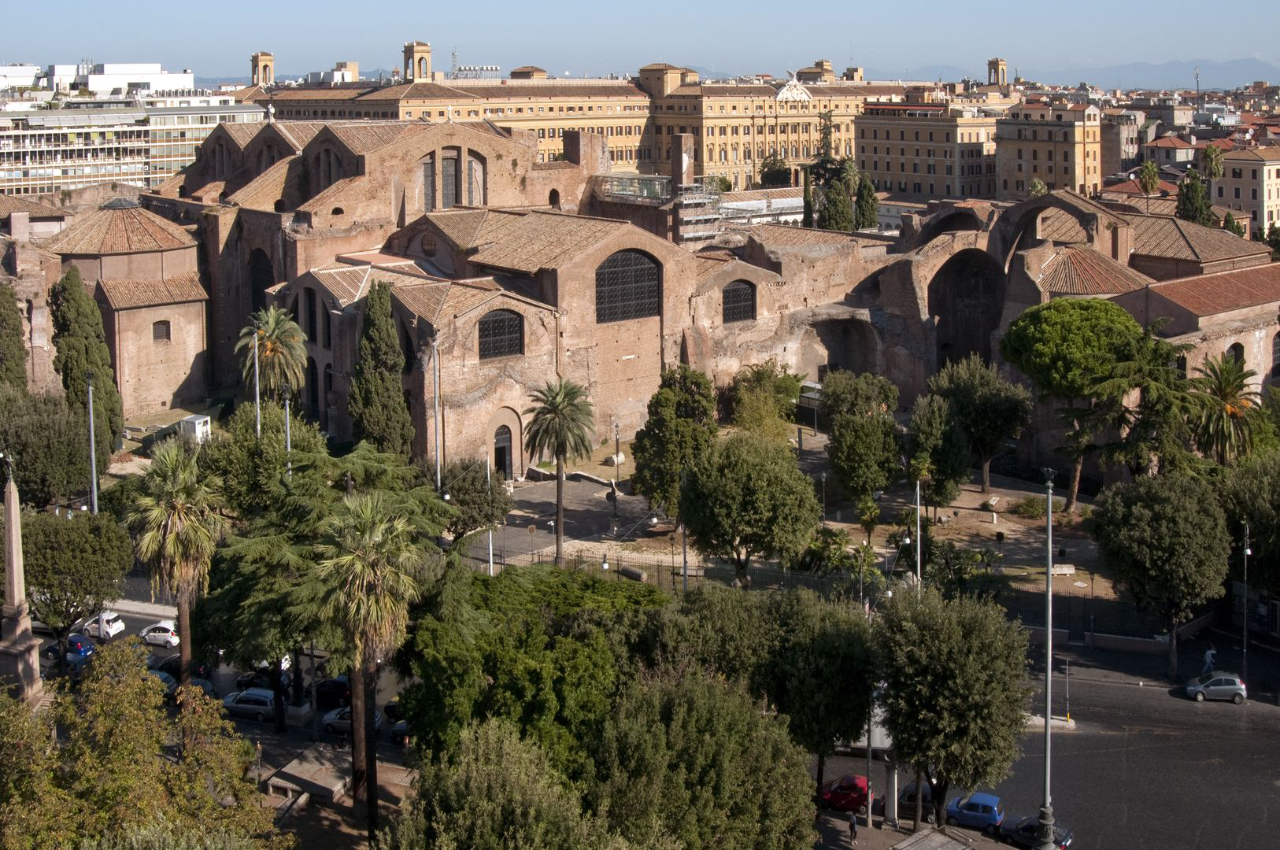
National Roman Museum website (link below)
Below is a diagram of the site as it stands today, showing roads, the Basilica, the museums, and the large and small courtyards that sit on the original footprint of the baths.
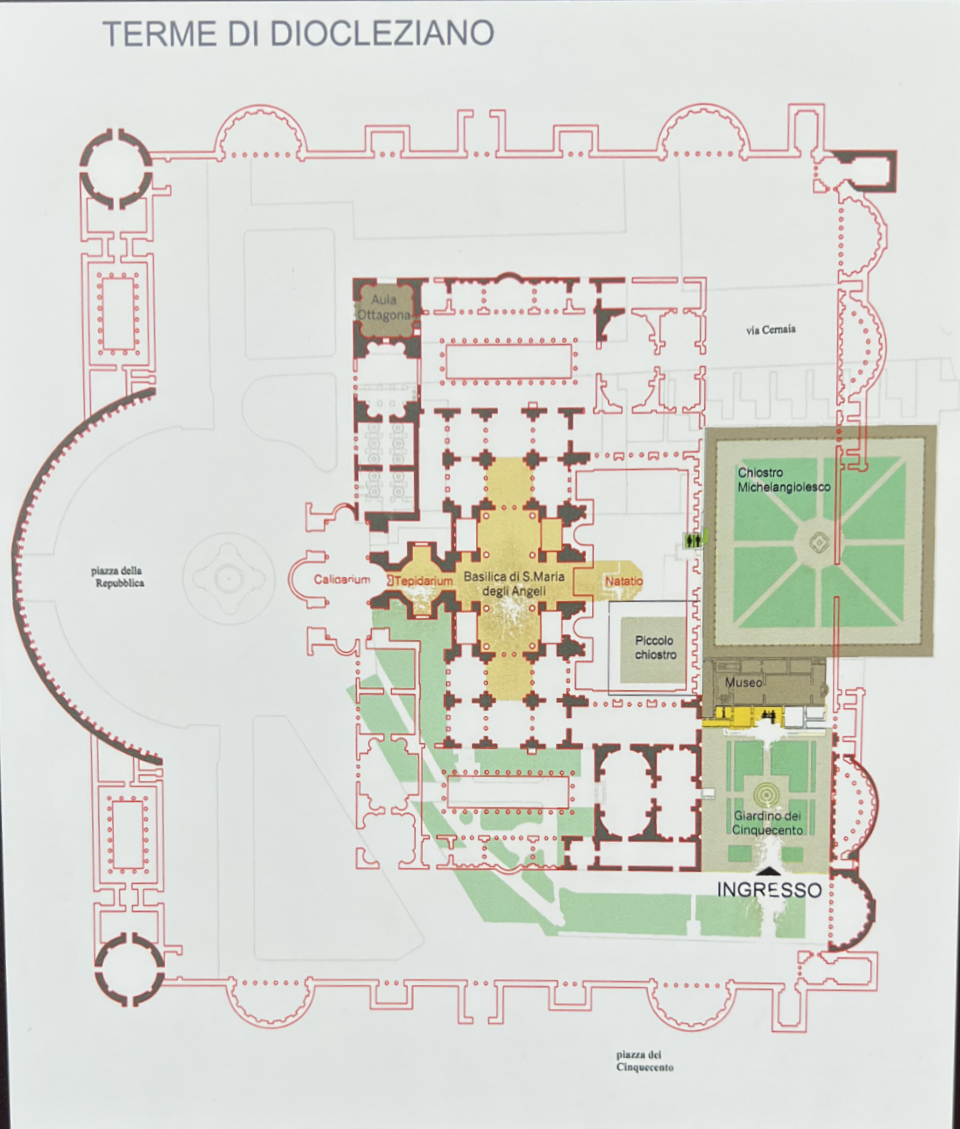
Below is a model of the site.
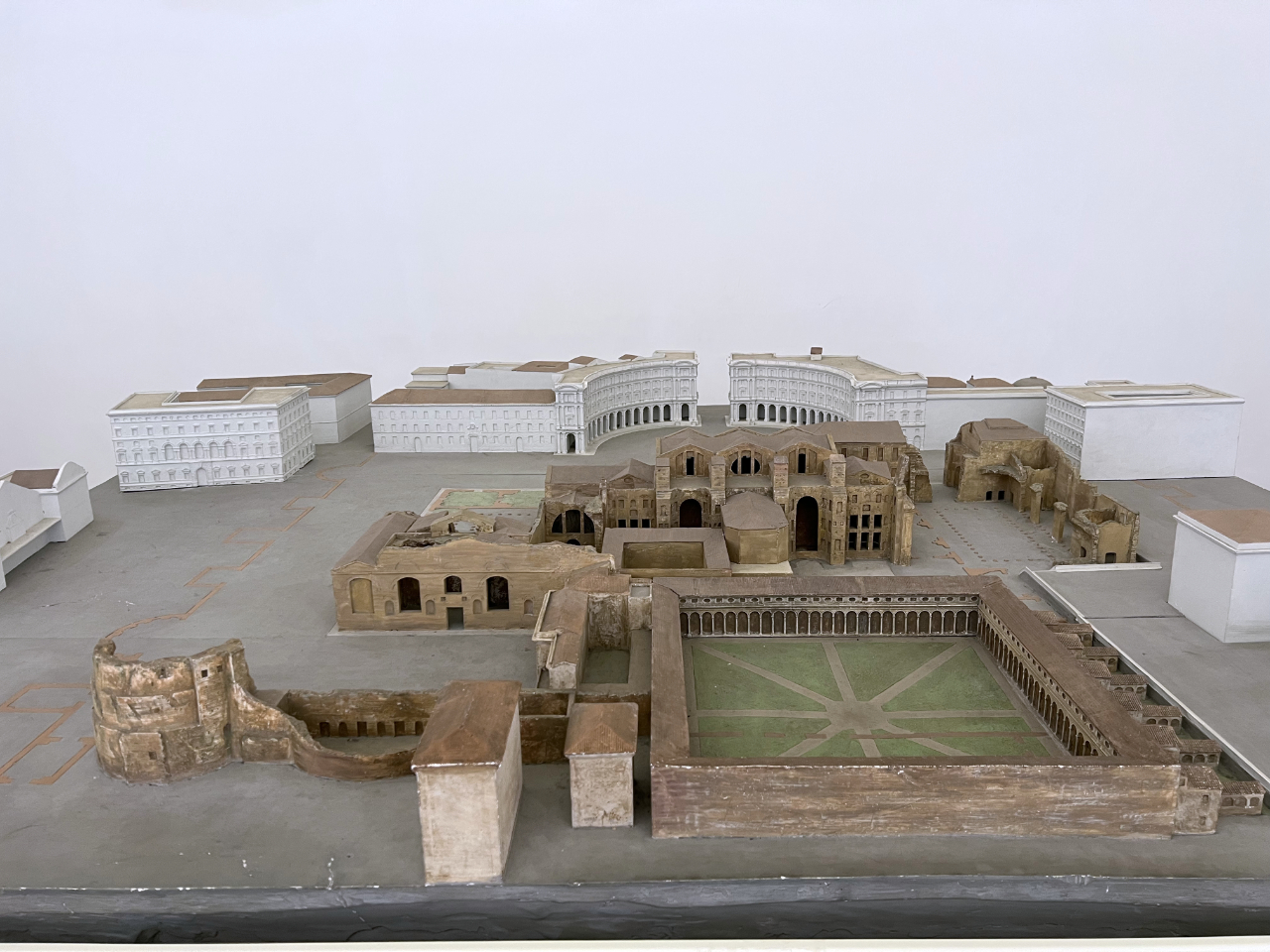
The Michelangelo cloister.

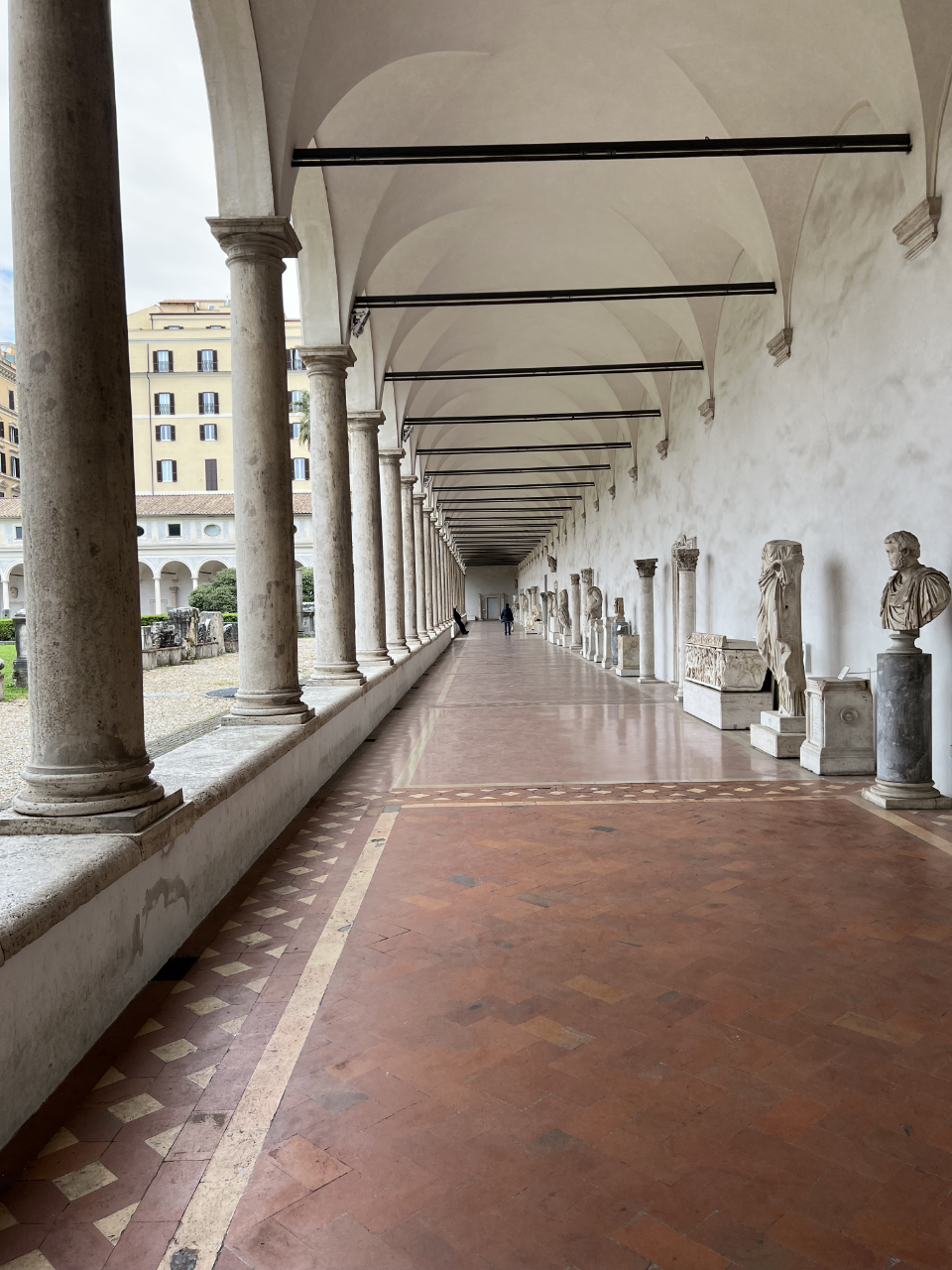
The smaller cloister.
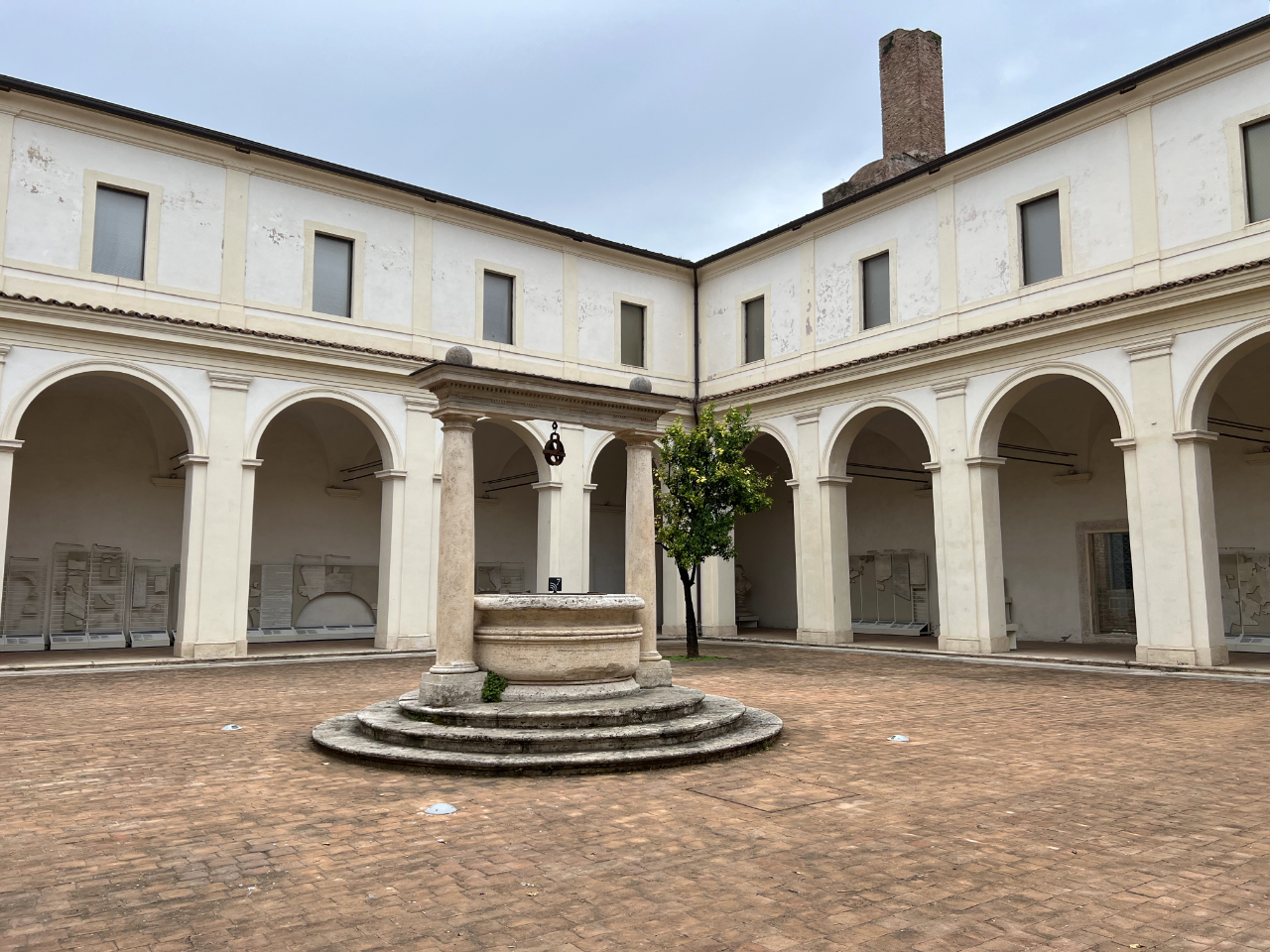
Some of the ruins of the baths, including tombs brought in from other sites.
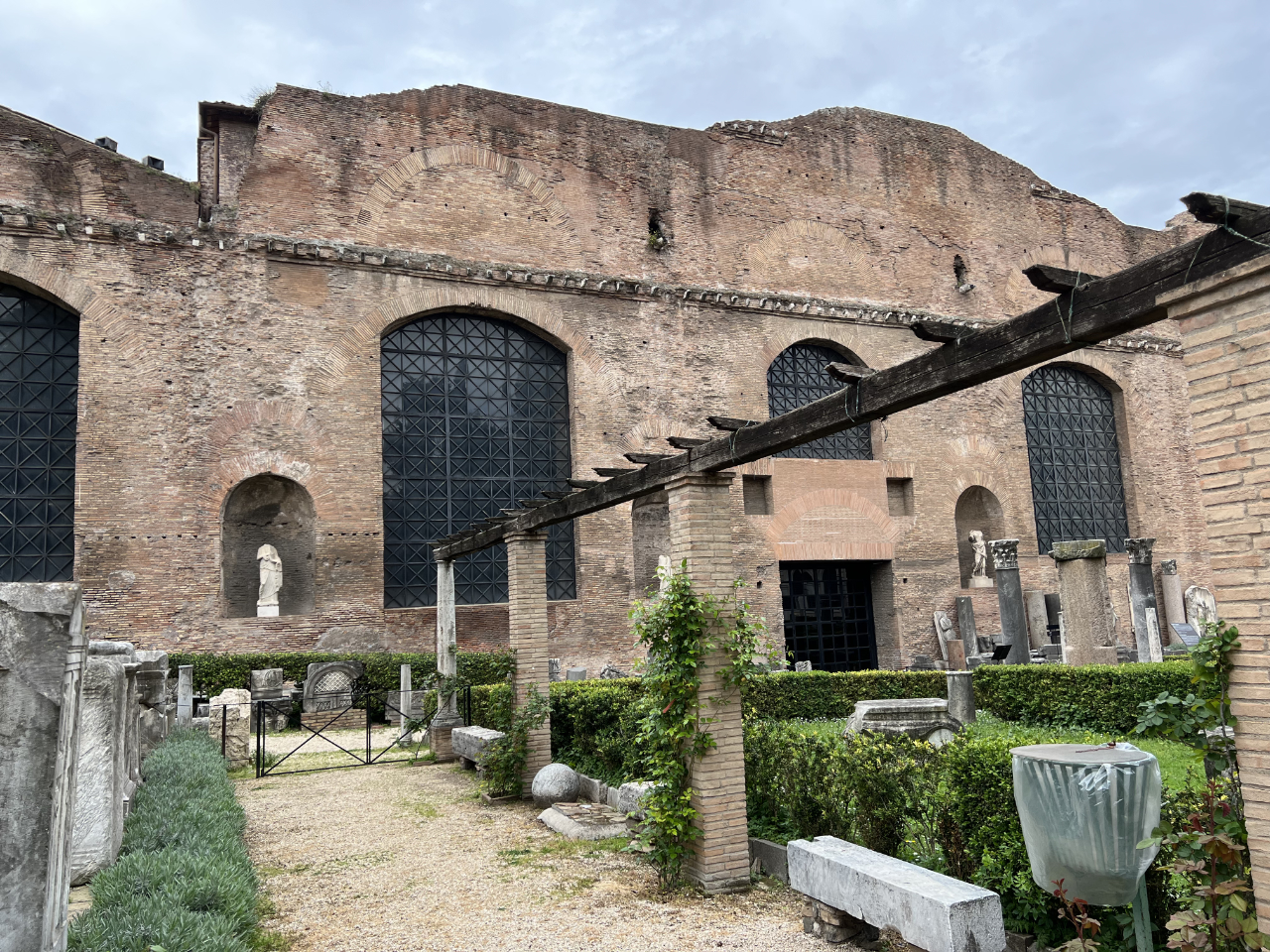
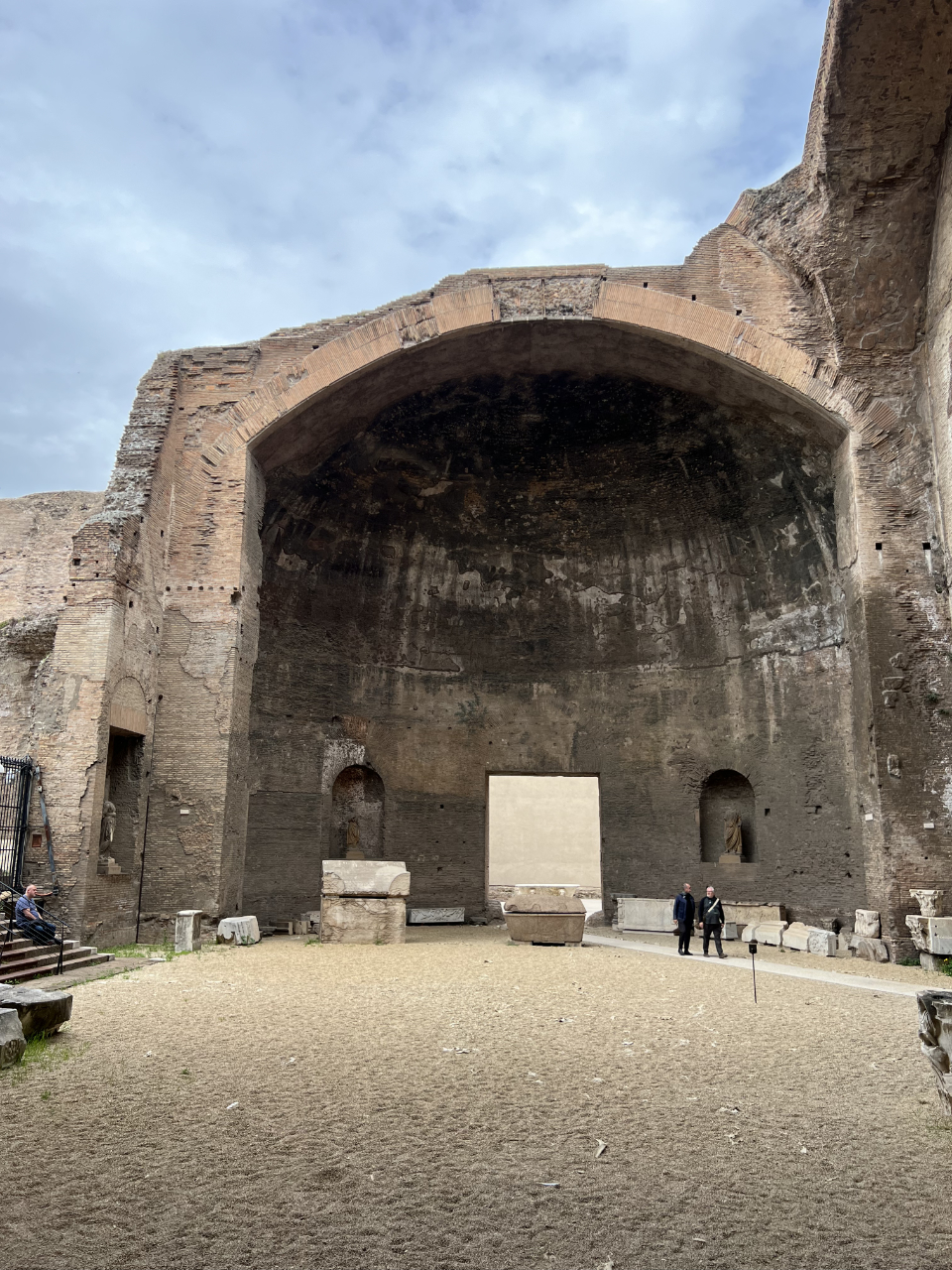
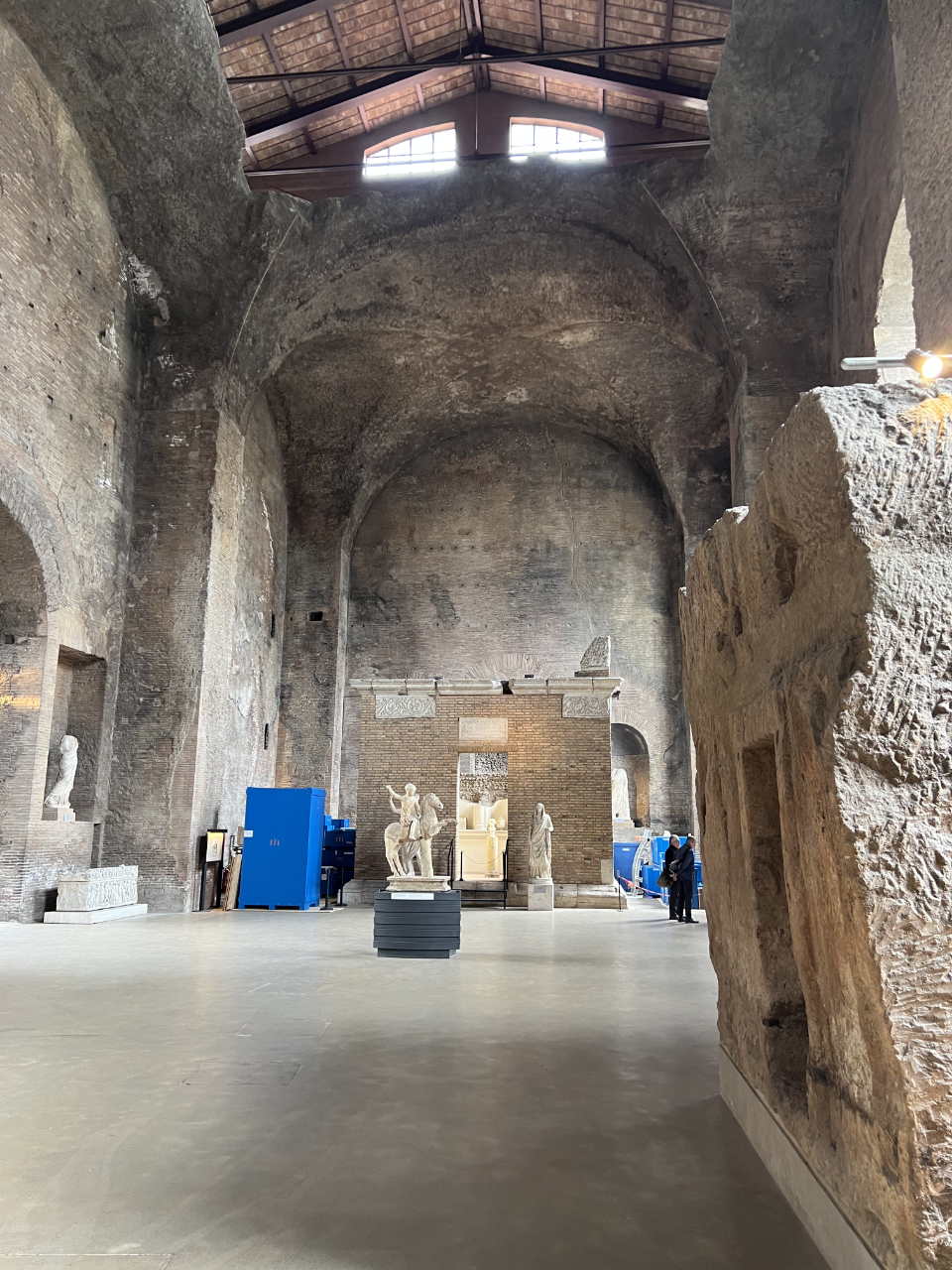
Mosaic room, with stories of Hercules.
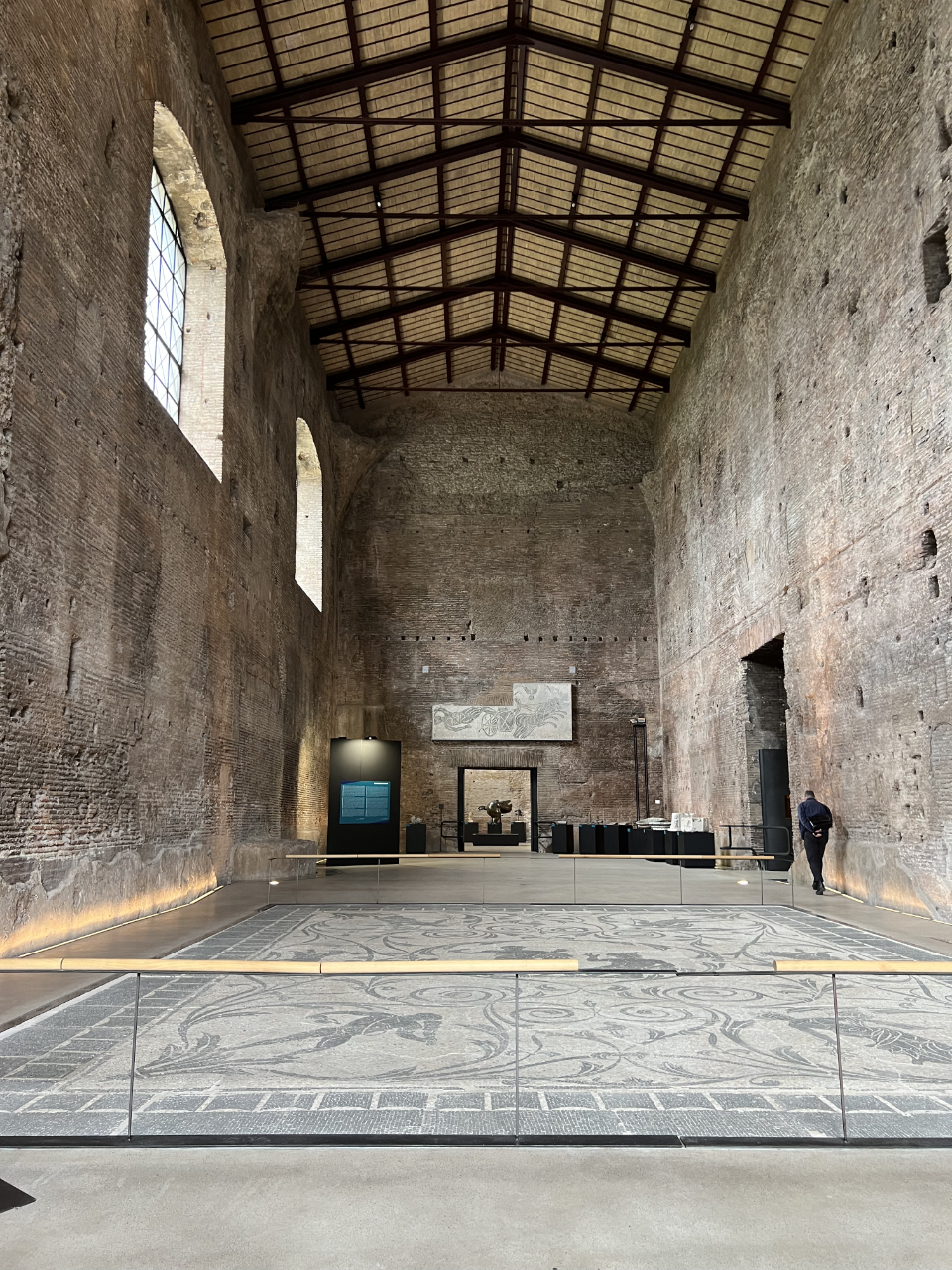

A small portion of the Natalio (swimming pool) available for viewing. A third is taken up by the small courtyard, and the rest is not accessible to tourists.
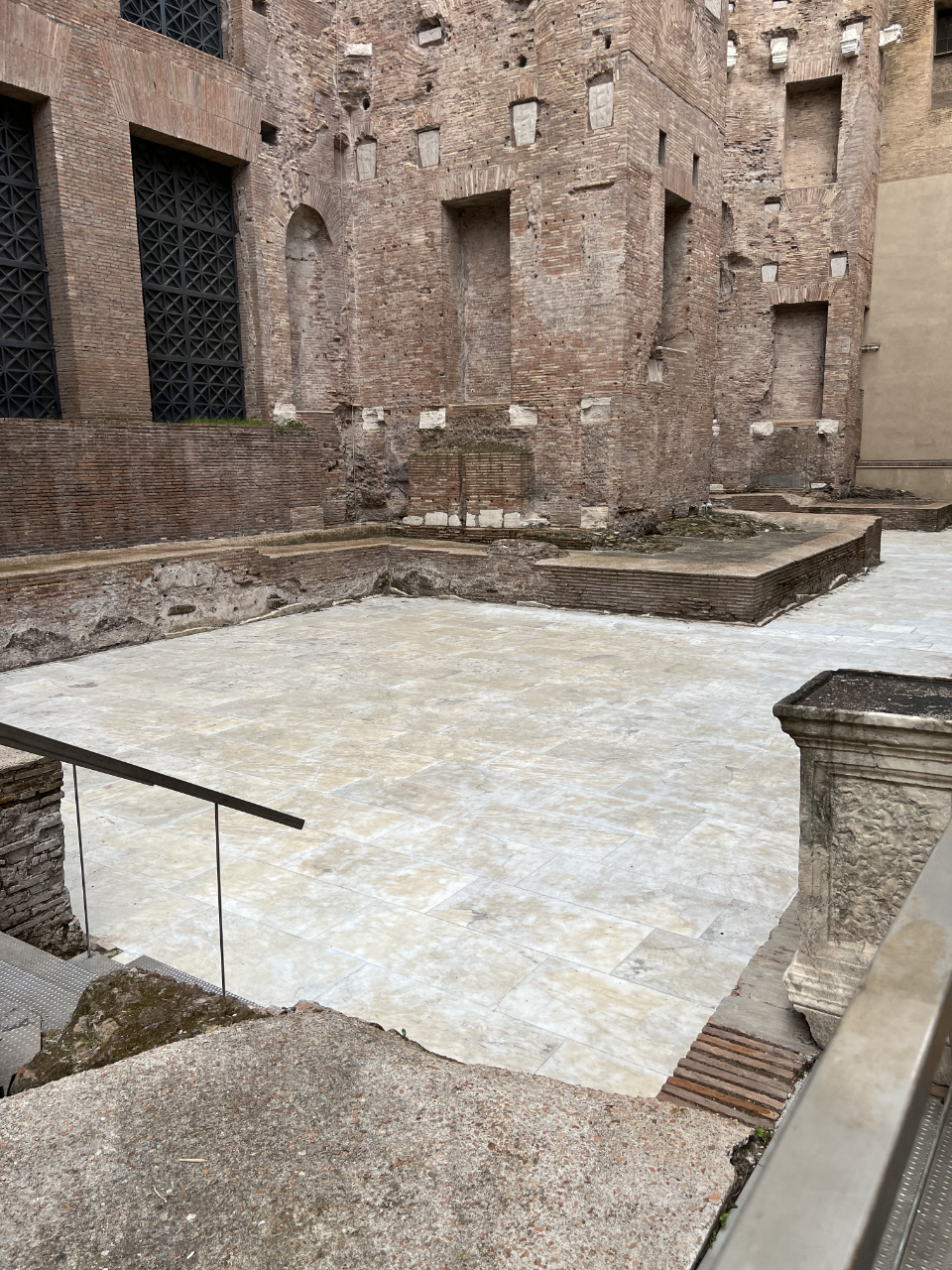
Piazza della Repubblica.
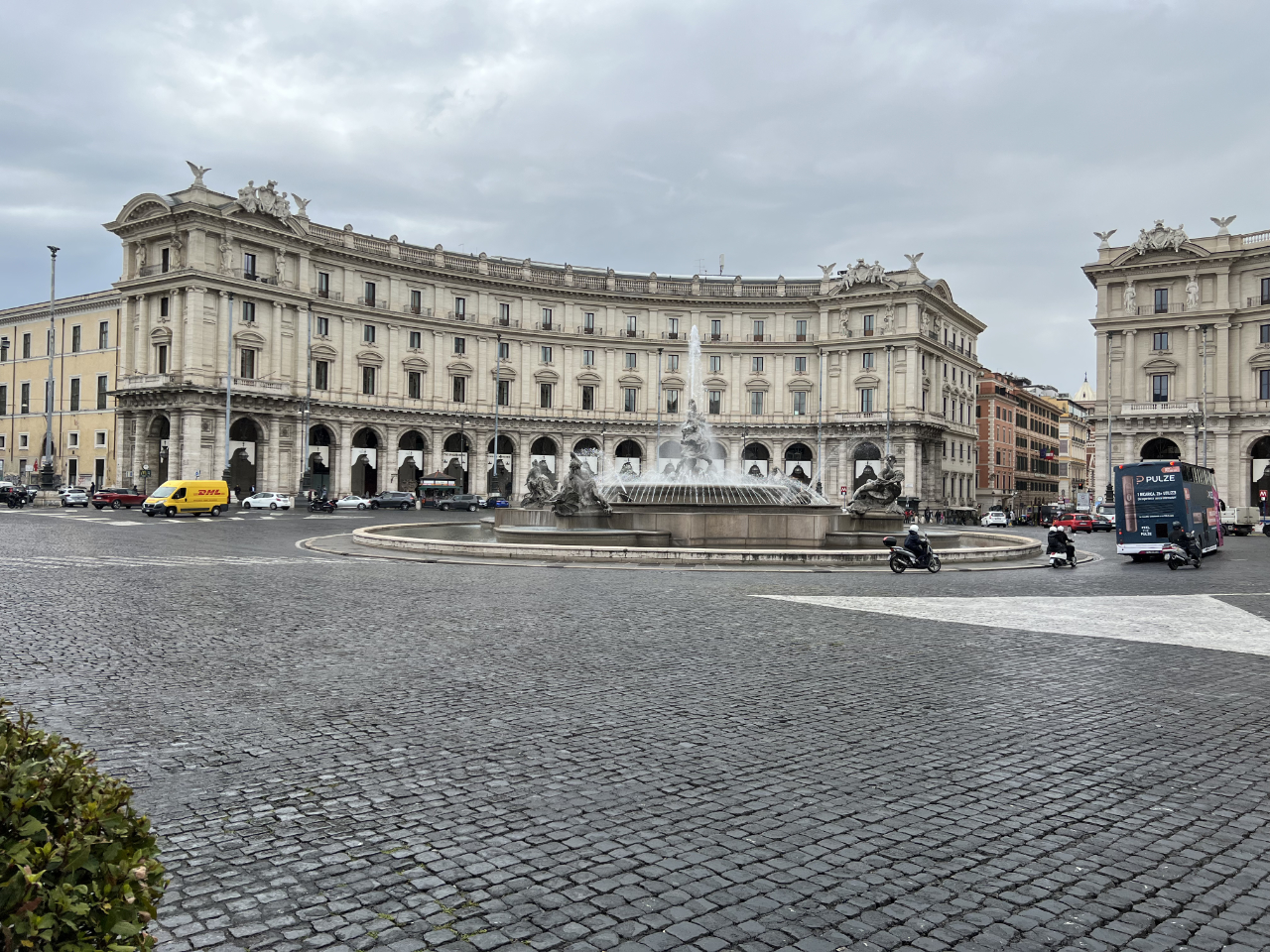
Unfortunately the Basilica was closed for reasons unknown, so Eileen was not able to see the interior designed by Michaelangelo from the rooms of the baths.
The next stop was right across the street at a second site of the National Roman Museum – Palazzo Massimo, dedicated to the Roman artistic production unearthed in the city of Rome and surrounding areas and to the the Coin and Medal Collection. There were many pieces – statues, busts, urns, etc.
One of the most famous pieces is the "Boxer at Rest." The bronze statue was unearthed in 1885, in the foundation walls of an ancient building. The circumstances seems to suggest that the Greek statue was deliberately hidden to safeguard it from imminent danger, presumably pillaging. The boxer is portrayed in a moment of rest after a fight. It is attributed to an artist of the late Hellenistic period (2nd to 1st center BCE), inspired by the work of the Greek sculptor Lysippos (4th century BCE).
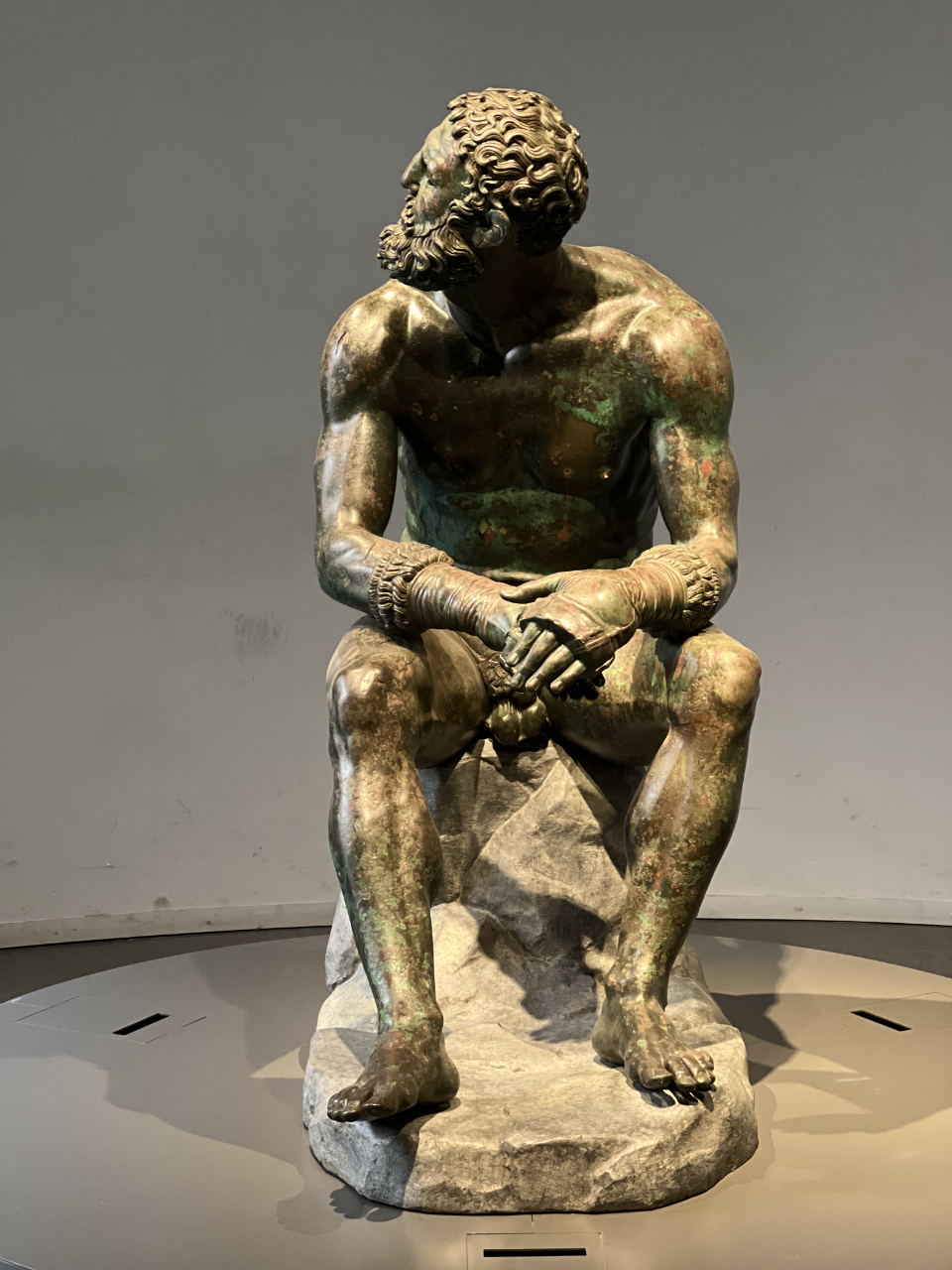
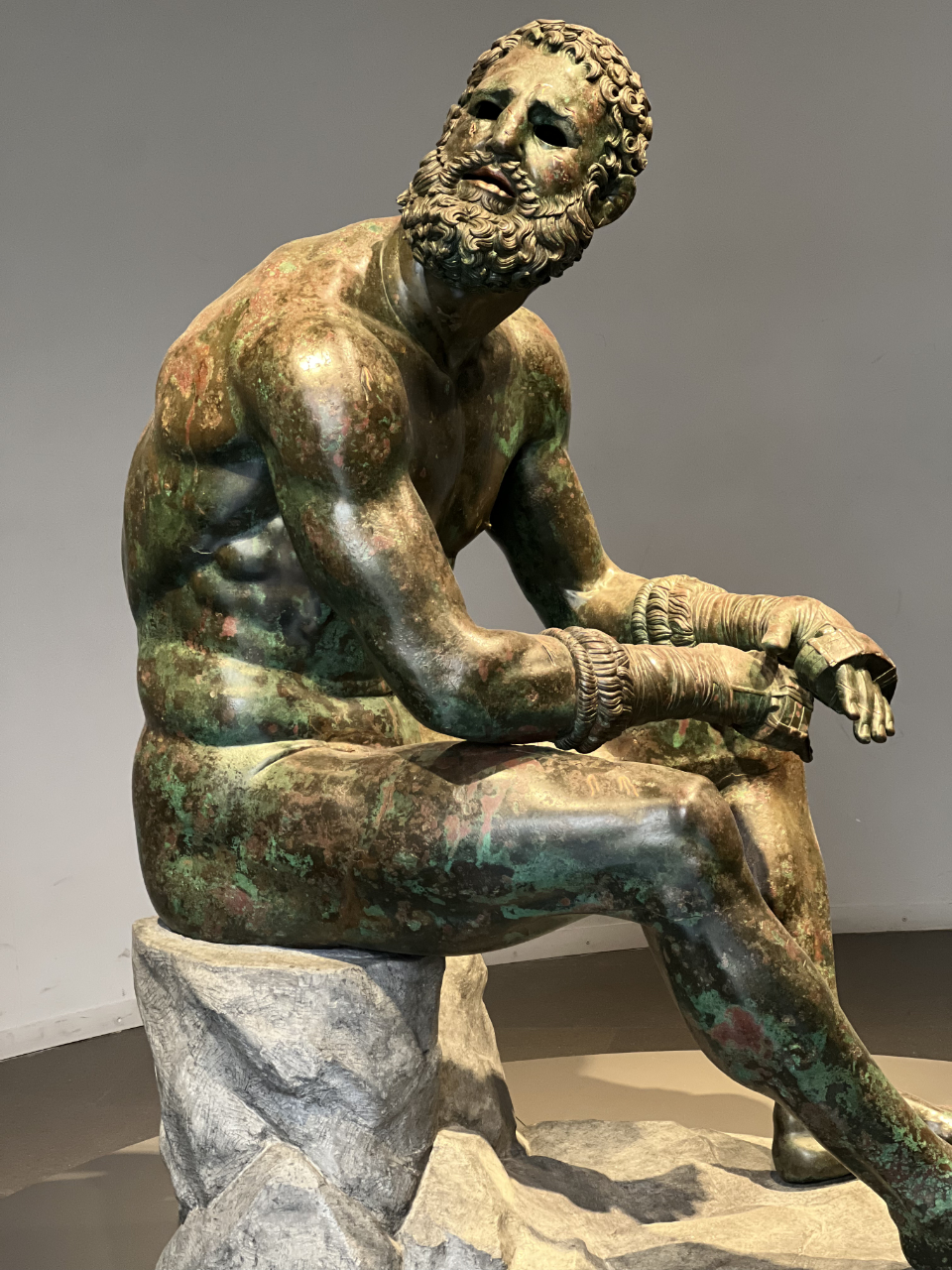
Aphrodite, a sculpture from the 1st century BCE, reminiscent of the famous Aphrodite of Cnidos by the Greek sculptor Praxiteles (4th century BCE).
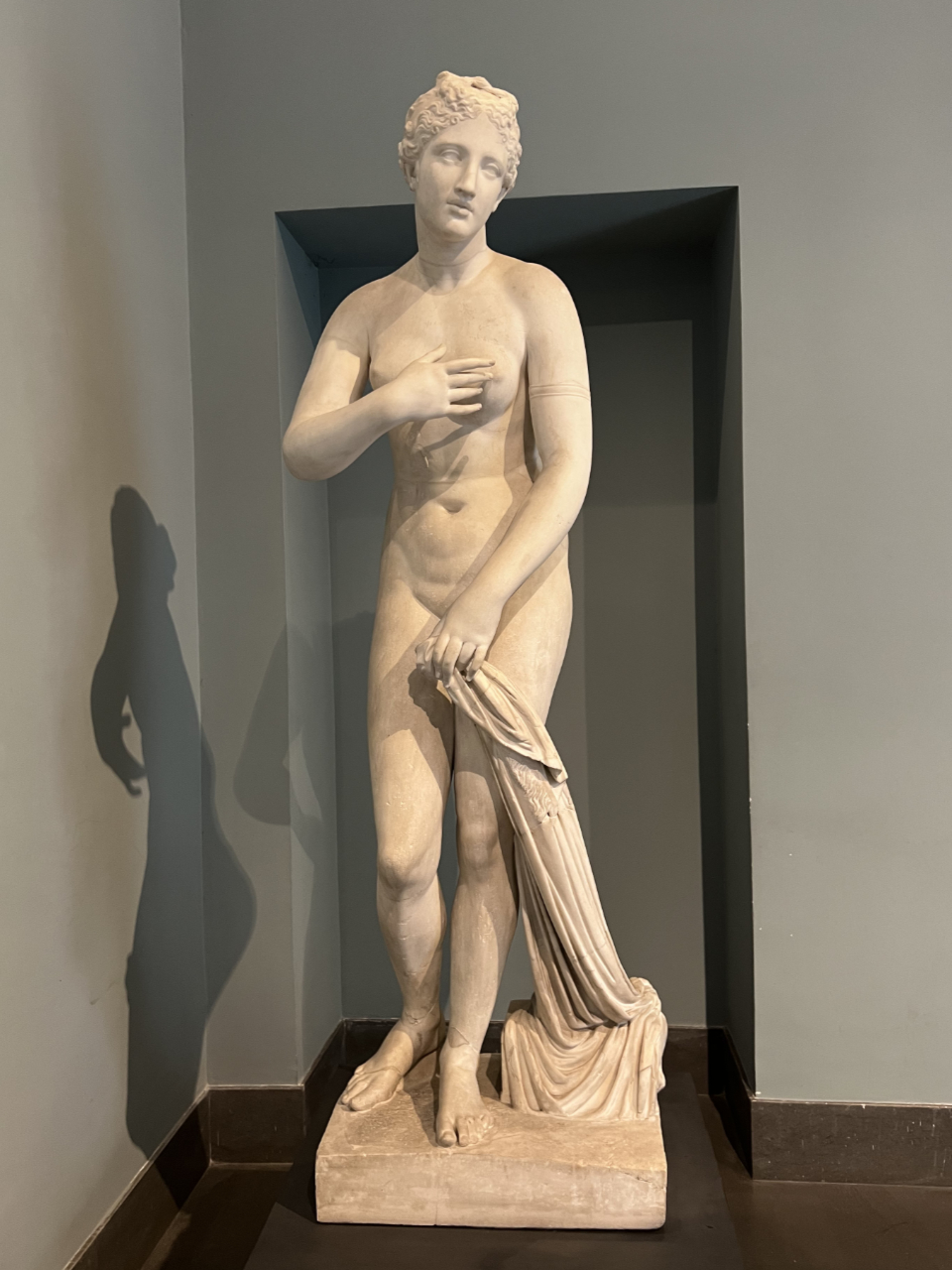
That was pretty much the day. Eileen had a late lunch/early dinner of pizza at Cafe Washington, an always-busy American bar with a big choice of Italian and international food, right on the corner a few steps from the StarMetropole Hotel. The MEF reception was typical drinks and appetizers, and Larry eventually finished the rest of the pizza Eileen brought back. And we took a evening stroll around the area before turning in.
Baths of Diocletian Links:
Other Links:
--
Larry and Eileen Samberg

















